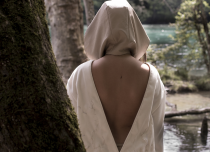”The composition of the whole depends on the proportioning and shaping of the darks, like dark leaves laid upon the snow. Mere Light is too common a thing to make a strong impression on the mind: and without a strong impression nothing can be sublime. With the majesty of darkness round circles his throne”
The architectural importance of shadows was was so described by Eighteenth Century writer, artist and architect John Ruskin. His approach to design was to manage the light and dark areas within a building to create the ultimate impact within a space, and to highlight interior details. These ideas are universally important in design and architecture, and later in photography and film.
With this in mind, there are many interesting effects that can be achieved through the use of patterned shadow screens. The main challenge for me of this project was designing a screen that would be adaptable to many different environments. I was keen not to allow too much light through, for the ultimate dramatic effect, and to keep the pattern abstract but dynamic. I was also interested in the projection of the shadow, how this would change with the movement of the screen – I tried to align the pattern so the most interesting effect would be created.
One other thought that inspired me was reading some of Japanese author Junichiro Tanazaki’s I933 book In Praise Of Shadows. He describes his regret of the elimination of shadows by the introduction of the electric light, and the acceptance of the Western obssesion with brightness. He writes ‘Surely you have seen in the darkness of the innermost rooms to which sunlight never penetrates, how the gold leaf of a sliding door will pick up a distant glimmer from the garden, then suddenly send forth an ethereal glow upon the horizon at sunset. Were it not for shadows, there would be no beauty.’
Perhaps the Screens of Paul Kerlaff will bring the beauty of shadows back into our Western homes.














Comments